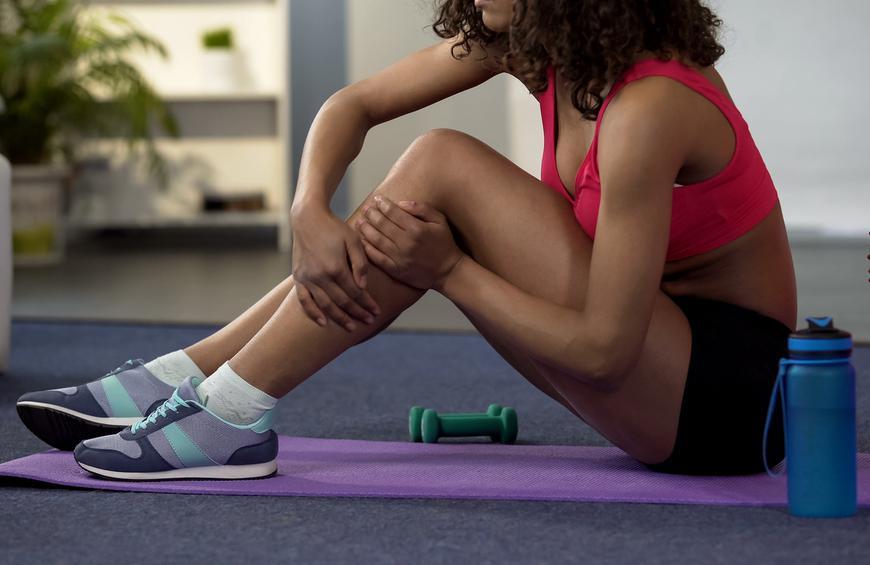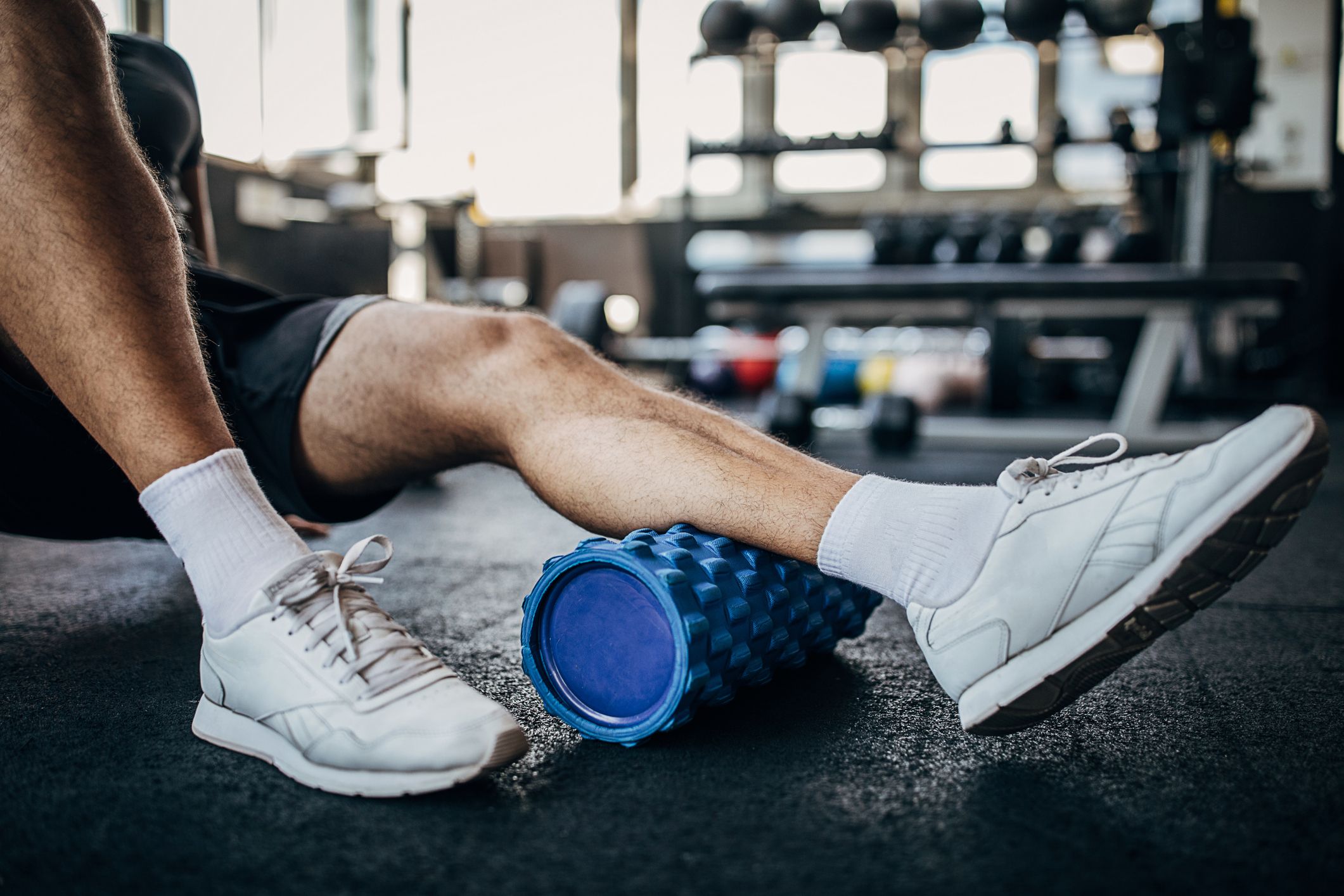For your muscles are sore, you might wonder if you should continue with your workouts or rest. In some cases, active recovery exercise like stretching and walking can be beneficial to sore muscles. But the decision to continue depends on the severity of soreness and symptoms you’re experiencing. Read on to learn more about when it’s all right to work out sore, and when you should rest and recover.

What are the benefits?
If you’re slightly sore, an “active” recovery may be beneficial. It may feel good to:
- stretch out sore muscles
- do light resistance exercises, such as core strengthening workouts
- do low-intensity cardio, such as walking or swimming
You can also focus on muscle groups that you didn’t work previously. For example, add in an arm weight workout the day after a run. In addition to feeling good, light recovery exercise may offer other health benefits. Mobility, or full-range, exercises like walking or easy cycling lead to more blood pumping through the muscles. This increase in blood flow may help you recover from soreness sooner. That is, as long as you aren’t overloading or challenging the muscles more. Recovery exercises may even offer the same benefits as getting a massage. One studyTrusted Source compared soreness in a group of participants 48 hours after they performed upper trapezius muscle exercises. Some participants received a 10-minute massage following the workout. Others performed exercises with a resistance band. Researchers concluded that both recoveries were equally effective in temporarily helping with delayed onset muscle soreness (DOMS), but more research is needed.
Muscle damage and muscle growth
Microscopic tears in the muscle, or a breakdown in muscle tissue, likely causes DOMS after a workout. Trying a new type of exercise or increasing the intensity can increase how sore you are in the days following a workout. Over time, though, your muscles become resilient to that exercise. They won’t break down or tear as easily. In response to micro tears, the body will use build them up more over time. This protects against future damage and leads to muscle growth. It’s important to get enough protein in your diet and allow your muscles to rest for this process to occur.
What are the risks?
Gentle recovery exercises can be beneficial. But overtraining can be harmful and even dangerous for your health. If you experience the following symptoms, it’s important to take time off from exercise and allow your body to rest. Let your doctor know about any of the following:
- increased resting heart rate
- depression or mood changes
- increased amount of colds or other illness
- overuse injuries
- muscle or joint pain
- constant fatigue
- insomnia
- decreased appetite
- worsening of athletic performance or little improvement, even after rest
- Injury vs. soreness
- Soreness can feel uncomfortable, but shouldn’t be very painful. The discomfort usually decreases 48 to
- 72 hours later.
Symptoms of an athletic injury may include:
- sharp pain
- feeling uncomfortable or nauseated
- pain that won’t go away
- swelling
- tingling or numbness
- areas of black or blue marks
- loss of function to the injured area
If you experience these symptoms, see your doctor. They may recommend at-home treatments like ice or medication.

Tips for preventing soreness
To prevent DOMS, cool down after exercising. Unlike a warmup, during a cooldown you’re gradually bringing your heart rate down and adjusting your body back to a resting state. Start with a gentle walk or easy spin on a stationary bike for 5 to 10 minutes. Stretching for the next 5 to 10 minutes can also help clear out lactic acid from the body. Lactic acid builds up when you exercise and can cause a burning feeling in your muscles. Clearing it out will allow you to bounce back sooner whenyou next work out. You can also use a foam roller to release any tension after exercise. In the days following your muscle soreness, these recovery workouts may help prevent or reduce soreness:
- yoga
- stretching or resistance band exercises
- walking or easy hiking
- swimming laps
- easy cycling
If you’re starting a new fitness routine or trying a new type of exercise for the first time, it’s important to go slow at first. Gradually increasing the intensity and frequency of exercise will help prevent soreness. And remember to always get your doctor’s approval before starting a new exercise routine. Depending on your fitness level and how sore you are, you can usually resume workouts within a few days to a week following recovery. In most cases, gentle recovery exercises like walking or swimming are safe if you’re sore after working out. They may even be beneficial and help you recover faster. But it’s important to rest if you’re experiencing symptoms of fatigue or are in pain. See a doctor if you believe you’re injured, or if the soreness doesn’t go away after a few days. Even professional athletes take days off. Working rest and recovery days into your regular exercise routine will allow you to perform better the next time you hit the gym.
How can you ease DOMS and decrease your recovery time?
Unfortunately, if you’re already in the throes of monumental soreness, the only surefire remedy is time. But there are a few things you can do to help ease the pain while you wait and speed the process along.

Hydrate
Drink water. A brief body of research shows a correlation between dehydration and increased muscle soreness and DOMS. While more research needs to be done, researchers and practitioners have postulated that if dehydration increases soreness, then increased levels of hydration can minimize it. The main theory here is that water helps flush out waste products, Seedman says. When muscles break down, they release waste products and toxins that need to be filtered out of the body, he explains, and these waste products are associated with increased soreness.
Do some light stretching
Again, the keyword is light. Stretching can be a great way to release tightness and increase your range of motion when you’re sore—which can make you feel better, even though it’s not actually healing the tears in your muscles or making them repair any faster. (While stretching preworkout usually focuses on dynamic moves, you can use static stretching after your workout, as SELF recently reported. This can help increase your range of motion, and, since your muscles are already warm, it can feel easier to get in that good stretch.) But more isn’t always more. You have to be careful. Doing some light stretching can be good, but trying to overstretch the muscle when it feels extremely tight can actually cause the muscle to come back even tighter because the body is trying to resist it. So how do you know how far is too far? Stretch until it feels pretty tight, let up after 5 to 10 seconds, and then repeat that, without ever getting to the point where it feels unbearable. If it’s too painful to even think about stretching, skip it—it’s really just about getting some temporary relief if you can.
Make sure you’re getting enough protein
Protein is a critical nutrient for building and maintaining muscle, so it plays a huge role in helping your muscles recover from a tough workout. While you should be eating enough protein all the time to prevent recurring or long-lasting soreness from your workouts, says Seedman, it can still be helpful to double-check that you’re eating enough protein after the damage is done. “You can almost make the argument that that’s going to be as vital as light exercise [to recover]. This doesn’t mean excessively high amounts of protein, necessarily. While needs vary, people who work out should aim for about 1.4 to 2 grams of protein per kilogram of bodyweight. For an active person who’s 150 pounds, that’s about 95 to 136 grams per day, split up between all your meals.
